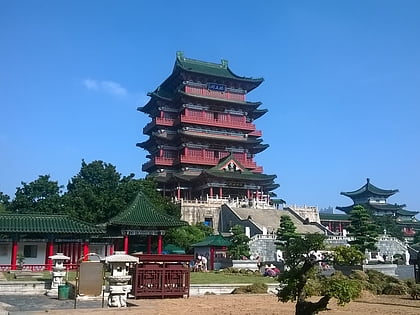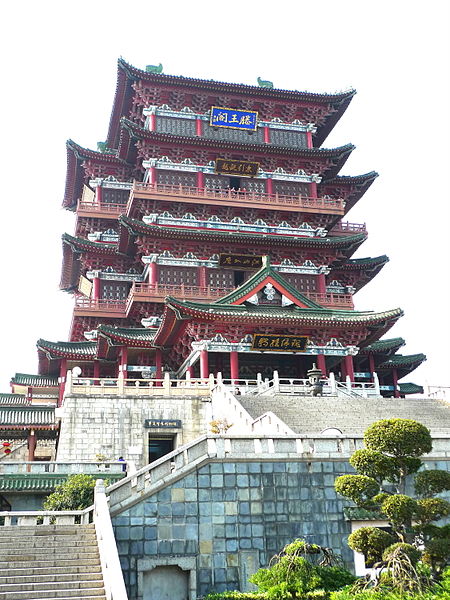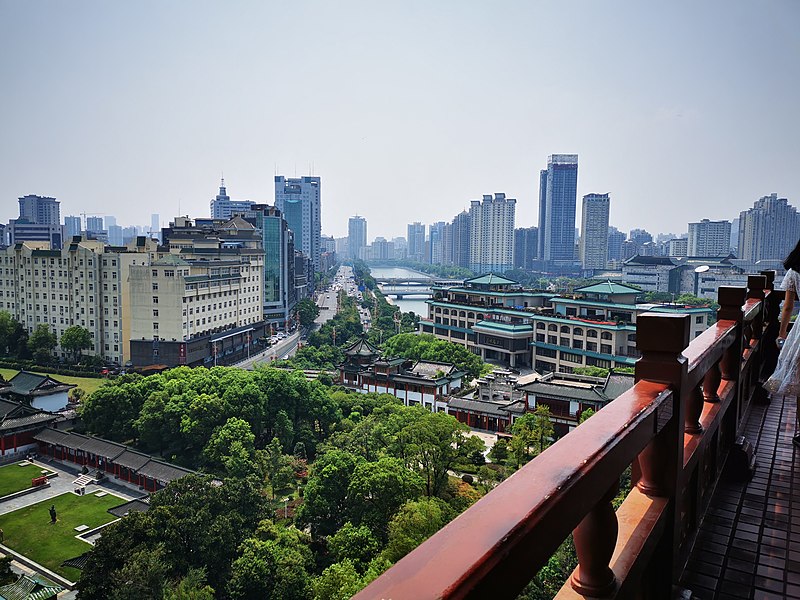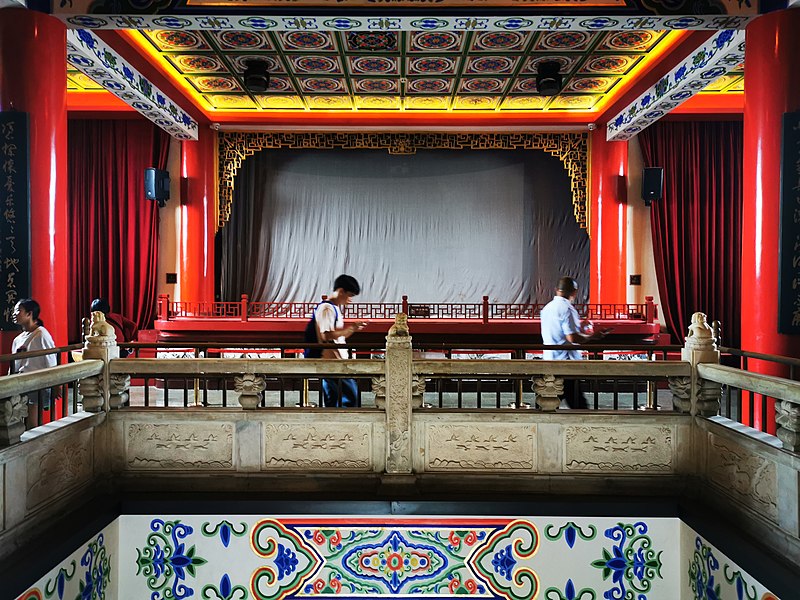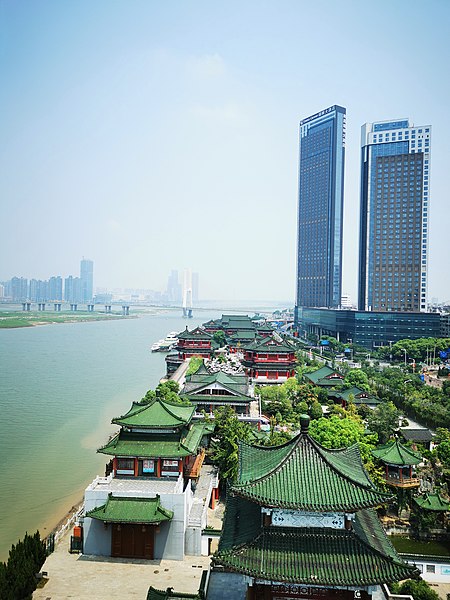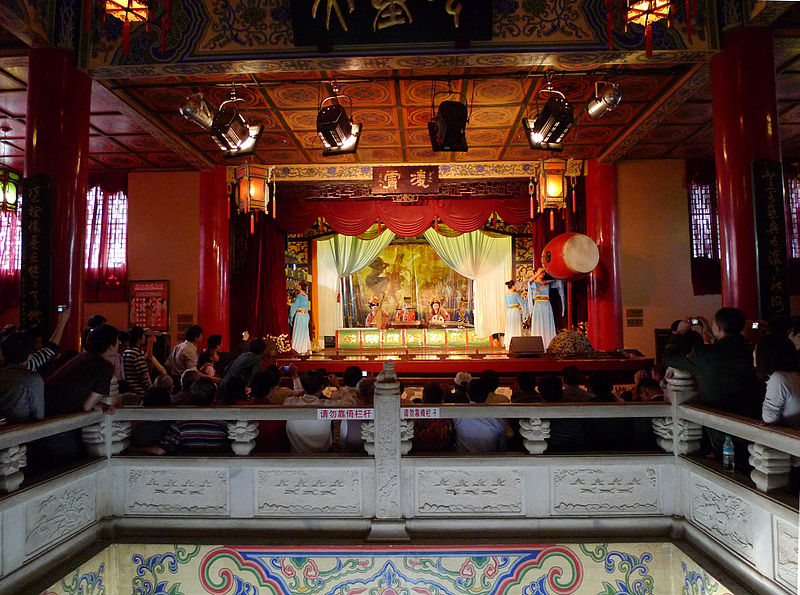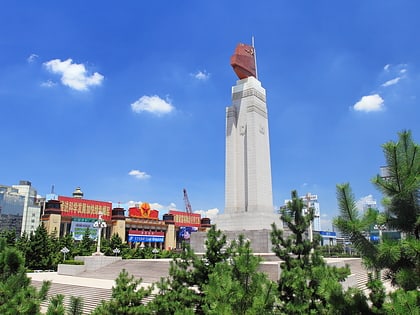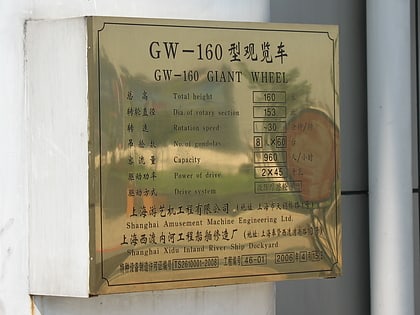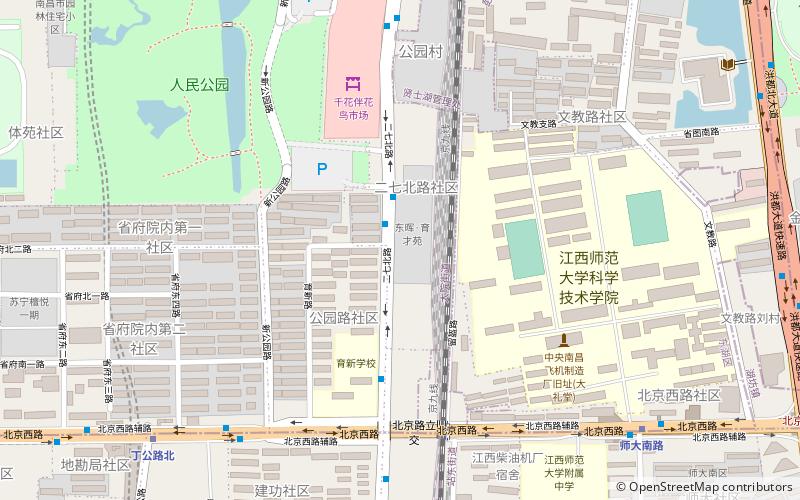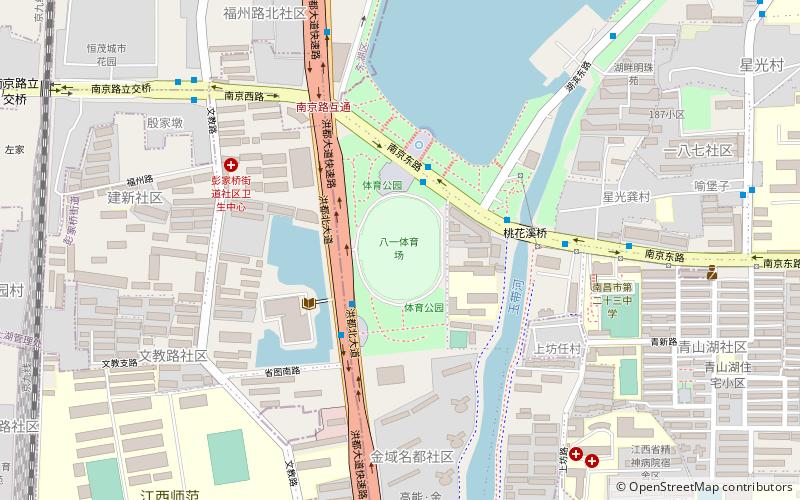Pavilion of Prince Teng, Nanchang
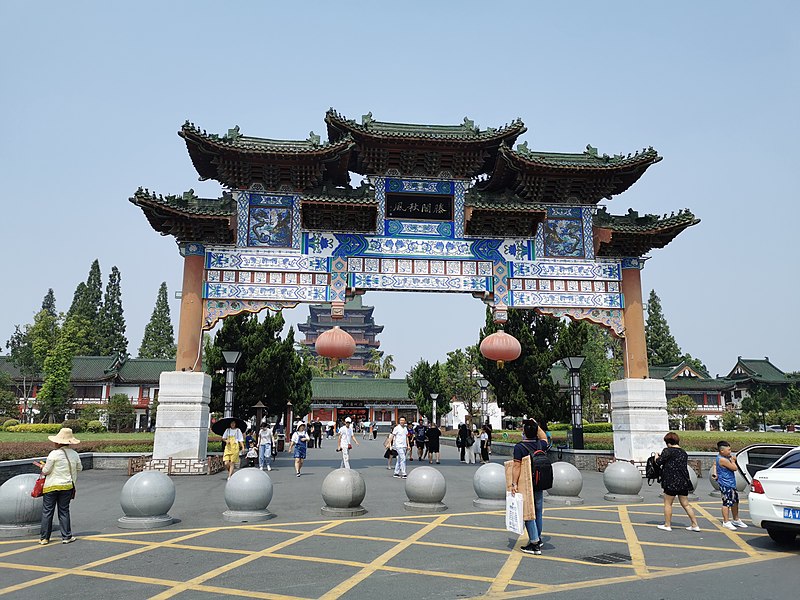
Facts and practical information
The Pavilion of Prince Teng, also known as the Tengwang Pavilion, is an iconic cultural landmark in the city of Nanchang, located in the Jiangxi Province of China. This towering structure stands as a testament to the rich history and architectural splendor of ancient China.
Originally built in 653 AD during the Tang Dynasty, the pavilion has been reconstructed several times throughout the centuries, with the current iteration dating back to 1989. The Pavilion of Prince Teng is renowned for its grandeur and is often associated with the famous Preface to the Pavilion of Prince Teng, a piece of prose by poet Wang Bo which has elevated the pavilion's status in Chinese literature.
The pavilion is an architectural marvel, boasting multiple stories that reach towards the sky, adorned with flying eaves and intricate woodwork. Visitors can climb to the top of the pavilion to enjoy breathtaking views of the cityscape and the Ganjiang River, making it a popular spot for sightseeing and photography.
Inside, the Pavilion of Prince Teng houses exhibitions that showcase the history of the structure, traditional Chinese art, and cultural artifacts, providing tourists with a rich educational experience. Cultural performances, including music and dance, are often held within the pavilion, bringing to life the artistic heritage of the region.
Nanchang
Pavilion of Prince Teng – popular in the area (distance from the attraction)
Nearby attractions include: Bayi Square, Star of Nanchang, People's Park, Nanchang University.
Frequently Asked Questions (FAQ)
How to get to Pavilion of Prince Teng by public transport?
Metro
- Wanshou Palace • Lines: 1 (13 min walk)
- Tengwang Pavilion • Lines: 1 (14 min walk)
Bus
- 工人文化宫 • Lines: 232路, 5 (16 min walk)
- 八一桥 • Lines: Brt1路 (16 min walk)
